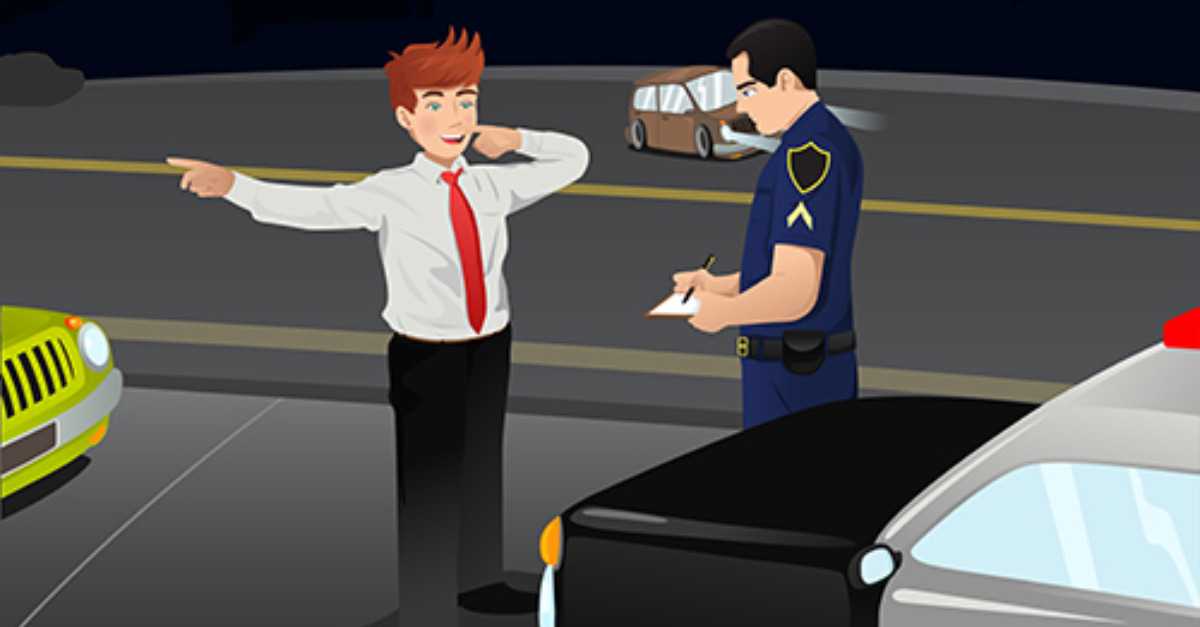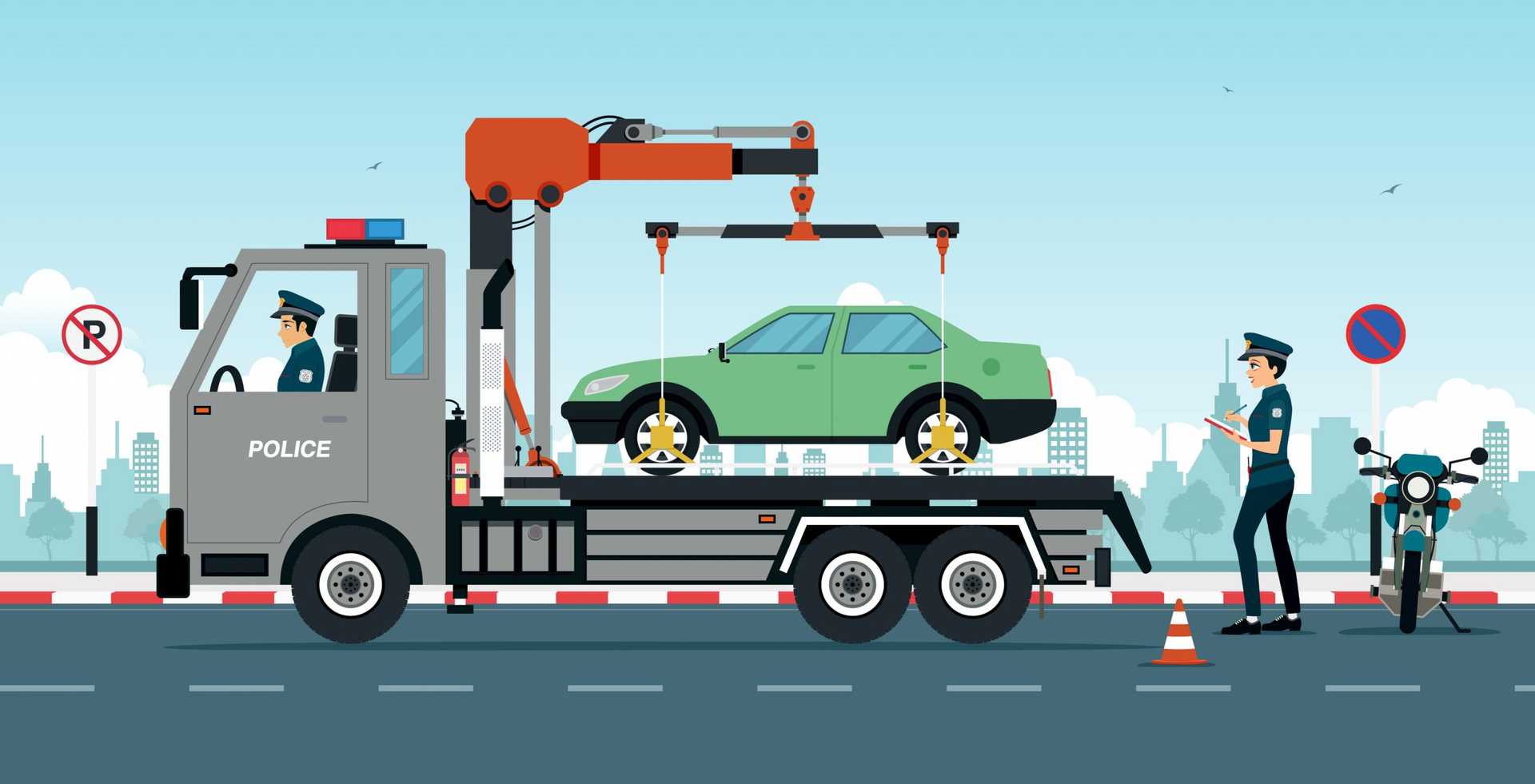“Sniffing Out Crime”: Rodriguez and DUI Investigations
The guardians are similar to the dog “‘[i]n that it (the dog and analogously the guardians) distinguishes friendly from hostile looks by nothing other than by having learned the one and being ignorant of the other'” ( Plato—the Republic, 376b).
Today, the police “canine partner,” a guardian on a leash, possesses, as the police would have it, an infallible nose to sniff out crime. “If he alerted, something was there,” so testifies the K-9 officer, defending the infallibility of his “canine partner’s” olfactory abilities in a vehicle search. This testimony, here in southern Arizona, Ground Zero in the war on drugs, is common as candy.
But in another type of common case, here on the border, also common, also involving vehicles, noses are just as important. I’m talking about DUI’s. The noses are not canine, but human.
As in drug cases, police often stop our clients for some single minor traffic violation. Almost always, the police claim that as soon as they get to our client’s driver’s window , the officer “smells alcohol.”
Of course, here in Arizona, and everywhere else, it is not illegal to “drink and drive” but only to do so if “impaired” or above a BAC of . 08. And, the mere odor of alcohol doesn’t tell you how much a person drank. Neither do bloodshot watery eyes. Or a flushed face.
But it is often on the basis of the odor alone, or nearly so, that the office orders the client out of the car and, abandoning the traffic violation, begins the typical DUI investigation, usually with HGN.
However, a new U.S.Supreme Court case, Rodriguez v. United States severely limits officer’s abilities to transmogrify a minor traffic stop into a criminal investigation. 135 S.Ct 1509 (April 21, 2015). To explain how, it is worth taking a look at the specific facts.
The Stop
Around midnight, on a quiet winter Tuesday in rural Nebraska, Dennys Rodriguez and his passenger, Scott Pollman, drove a late Model Mercury Mountaineer westward from Omaha, on a desolate four lane state highway, Nebraska 275. J.A. 17-18, 20, 24. As they passed the small prarie town of Valley, at an hour when most Valley residents had gone to bed, one local police officer, however, remained vigilantly awake. Morgan Struble , of the Valley town police department, along with his “canine partner,” “Floyd” sat stationary, yet alert, in a Valley police cruiser, on Nebraska 275, in a dirt turnaround, watching for “speeders and intoxicated drivers .”
Although Mr. Rodriguez was not speeding or driving erratically, Officer Struble decided to pursue him anyway. Pulling out of the turnaround, he probably gunned it to catch up, riding three to four car-lengths off Mr. Rodriguez’s left rear bumper, one lane over, at at least 55 MPH, cruiser headlights probably glaring in Mr. Rodriguez ‘s rear view mirrors.
It was at this point that Officer Struble claimed he noticed a single minor deviation: according to Officer Struble, Mr. Rodriguez’s passenger-side tires momentarily crossed a fog line (for about “two seconds). Whether or not Officer Struble recruited the movement, or how pronounced it was, is unclear. However, on that basis alone, he stopped Mr. Rodriguez, at 12:06 AM.
Contact
In the dark, Officer Struble approached Mr. Rodriguez’s Mountaineer from the passenger’s side. He testified later that he smelled “air freshener”and that the passenger, Mr. Pollman, the passenger, seemed nervous, “pull[ing] his cap low over his eyes”Id.
When Officer Struble then asked Mr. Rodriguez to accompany him to his patrol car, Mr. Rodriguez asked if he was obligated to do so. Id. Officer Struble testified later that although he had never before had anyone refuse to come back to his patrol car, “in [his] experience,” doing so was a “subconscious behavior that people concealing contraband will exhibit.” J.A. 53. Mr. Rodriguez returned to the Mountaineer, and Officer Struble went off to his Valley Police Department cruiser to peform a records check on Mr. Rodriguez. It came back negative.
Additional contact
Approaching the Mountaineer a second time, Officer Struble this time asked Mr. Pollman for his identification and queried “where he was coming from and where they were going.” Id. Mr. Pollman explained that he and Mr. Rodriguez had made the two-hour trip on a Tuesday from Norfolk to Omaha to investigate the possibility of purchasing an older-model Ford Mustang. Officer Struble found this, too, suspicious. J.A. 60-61.
At 12:19 AM, 13 , Officer Struble again returned to his cruiser. While there he called for a back-up officer, because he wanted Floyd to sniff around the exterior of the Mountaineer :He was “going to walk [his] dog [“Floyd”] around the vehicle regardless whether [Mr. Rodriguez] gave [him] permission or not.” J.A. 71.
The Dog Sniff
At approximately 12:27 AM, Officer Struble approached the Mountaineer a third time, warning ticket in hand, which he quickly explained to Mr. Rodriguez. At that point, he had “got all the reason[s] for the stop out of the way …” Rodriguez, supra 2015 WL 1780927 at 4, 135 S.Ct 1609, 1613 (April 21, 2015). However, Officer Struble did not consider Mr. Rodriguez “free to leave.” He asked Rodriguez for permission to walk Floyd around the car. When Rodriguez demurred, Struble ordered Rodriguez out of the Mountaineer and into the Valley Town Police Cruiser.
At 12:33, a backup officer arrived. Notwithstanding, Mr. Rodriguez lack of consent, and although the purpose of the stop was over, Officer Struble walked Floyd around the Mountaineer. On the first pass nothing happened, but Officer Struble persisted, walking Floyd around a second time until he finally “alerted.” Floyd’s “alert” occurred “seven or eight minutes,” after “Struble issued the warning ticket. Rodriguez, supra 135 S.Ct.at 1613.
The Arrest and Charges
The ensuing search of the Mountaineer revealed a large amount of methampthetamine. Mr. Rodriguez was ultimately indicted for possession with intent to distribute 50 grams or more of methamphetamine in violation of 21 U.S.C. § 841(a)(1) and (b)(1). J.A. 116. Mr. Rodriguez filed motion to suppress the evidence, arguing that his 7-8 minute detention after he received is warning ticket violated his constitutional rights. The District court denied the motion, adopting a magistrate’s recommendations and holding that although there was no reasonable suspicion to prolong the stop for the dog sniff, the 7-8 minutes delay was de minimus and therefore not long enough to violate rights (“not of constitutional significance”). Rodriguez, supra 135 S.Ct. at 1614. The Eighth Circuit affirmed, but failed to address the reasonable suspicion issue.
The Opinion
The U.S. Supreme Court, however, in a 5-4 decision, reversed. Holding, that the seven or eight minute delay after the warning ticket violated Mr. Rodriguez’s constitutional rights, Justice Ginsberg, delivering the opinion, emphasized that “ordinary inquires incident to [the] traffic stop . . . . serve the same objective as enforcement of the traffic code: ensuring that vehicles on the road are operating safely and responsibly.” Rodriguez, supra 135 S.Ct. at 1615 (emphasis added). These include “checking the driver’s license, determining whether there are outstanding warrants against the driver, and inspecting the registration and proof of insurance. ” Rodriguez, supra 135 S.Ct. at 1615.
However, “[a] dog sniff by contrast is a measure aimed at “detect[ing] evidence of ordinary criminal wrong doing.” Rodriguez, supra 135 S.Ct. at 1615 (emphasis added). “Lacking the same close connection to roadway safety . . . a dog sniff is [therefore] not fairly characterized as part of the officer’s traffic mission.” Id (emphasis added). “On-scene investigation into other crimes … detours from that mission.” Id. at 1616 (emphasis added).
Reasoning that although “the imposition here was no more intrusive” than ordering a person out of the vehicle during a traffic stop, “officer safety are interests different in kind from the Government’s endeavor to detect crime in general or drug trafficking in particular.” Id. at 1616. Thus, prolonging a traffic stop beyond the time “reasonably required” to complete its “mission,” however brief is unlawful. Id.
Moreover, the Court cautioned that police cannot circumvent the law by waiting to provide the traffic ticket: “The critical question [] is not whether to dog sniff occurs before or after the officer issues a ticket … but whether conducting the sniff “prolongs”—i.e., adds time to –the stop.” Id. (internal citations omitted). Conversely, because the stop must be completed in a “reasonable” amount of time, the police cannot earn “bonus time” by acting “expeditiously.”—i.e hurrying the investigation so that even with the sniff, it’s only, say a 5 minute stop. Id. Rather, once the purpose of the traffic stop is completed, however short, police cannot extend the stop, for even a few minutes, absent independent reasonable suspicion.
Application to DUI
Many DUI stops, as stated above, begin of course with a wafer- thin de minimus violation, often unrelated to so-called NHTSA cues of impaired driving. Speeding, for example, one of the most common reasons for a DUI stop is not, afterall, a NHTSA cue at all. Likewise, an equipment violation, such as a broken brake light, is another common reason to justify a DUI stop is, even the police will agree, not a NHTSA cue.
As stated above when a DUI officer approaches a vehicle, he invariably claims he smells “the odor of alcohol.” It’s either“emanating” from the vehicle or “the driver.”
Detecting impaired drivers is, of course ,consistent with “ enforcement of the traffic code: ensuring that vehicles on the road are operating safely and responsibly.” Rodriguez, supra 135 S.Ct. at 1615 (emphasis added). So it would seem ostensibly that a DUI is within the gambit of a traffic stop under Rodriguez.
But remember that in most states, including Arizona, it is not illegal to drink and drive. Rather it is only illegal to be “impaired,” or to be over a per se limit, .08.
Therefore, the first question, in light of Rodriguez , is whether the odor of alcohol alone, independently amounts to reasonable suspicion to expand the stop to conduct a DUI investigation. Many courts have answered, “No.”
In general, odor of intoxicants alone cannot be used to determine a driver’s BAC with any degree of certainty. State of Ohio v. Taylor, 44 N.E.2d 481, 482 (“The mere odor of alcohol about a driver’s person, not even characterized by such customary adjectives as ‘pervasive’ or ‘strong’ may be indicia of alcohol consumption, but is no more a probable indication of intoxication anymore than eating a meal is of gluttony.”). This is true particularly when there aren’t any other signs or symptoms of intoxication, irrespective of whether officers note a light, moderate, or strong odor of intoxicants. See People v. Roybal, 655 P.2d 410 (Colo., 1982) (When officer did not observe any additional indicia associated with intoxication, such as slurred speech, leaning on a door, inability to walk or understand, there is no probable cause to arrest for DUI, irrespective of any odor of intoxicants); People v. Boomer, 757 N.E. 2d 960 (Ill. App. 2001) rev. denied, 766 N.E.2d 241 (Ill. 2002) (Strong odor of alcohol did not constitute reason to believe driver was intoxicated).
Moreover, an odor of intoxicants when combined with bloodshot watery eyes does not warrant sufficient reasonable suspicion to conduct a traffic stop for DUI. City of Hutchinson v. Davenport, 54 P.3d 532 (Kan. 2002). There, the defendant was observed by police prior to getting to his vehicle and noted to have a moderate odor of intoxicants about his person as well as bloodshot eyes. Id. The defendant did not commit a traffic violation nor did he slur his words when speaking to the officers prior to the stop. Id. Finally, there weren’t any other indicia of intoxication, such as the impairment of fine motor skills, noted by the officer who conducted the stop. Id. The Court granted the defendant’s motion to suppress, finding that the officer lacked reasonable suspicion of any criminal activity at the time of the stop. Id.
Therefore, in light of Rodriguez, where the only indication of criminally impaired driving, is the “odor of alcohol,” at the driver’s door, the first argument is that there is no reasonable suspicion to begin a separate criminal investigation, in or out of the car.
Second, Rodriguez stands, at the least, for the proposition, that even de minimus extensions of the traffic stop are now illegal. This means that the officer is accorded only “reasonable” time to run a records check and write the ticket, explain it. Any argument from the prosecutor (or trial judge sua sponte) that the DUI investigation is but “a de minimus intrustion,” should fail, even though the crime, unlike the Rodriguez facts is undoubtedly related to highway safety.
In short, if an officer cannot develop reasonable suspicion before he expands the stop into a criminal investigation, pursuant to Rodriguez, he violates the Fourth Amendment if he does so. This means, in my view, that while an officer can order a driver out of a car, for “officer safety” per Rodriguez, he cannot start HGN –either in or out of the car – or the other FST’s, in order to develop reasonable suspicion.
Therefore, whether human or canine, police noses are constrained by Rodribuez in their efforts to “sniff out crime”: They can no longer exceed the bounds of the original stop, even for a few minutes, unless, before they do so, they have developed “individualized reasonable suspicion.” Odor alone , air freshener or alcohol, probably is not enough.
Recommended Articles

Driving under the influence (DUI) is a serious crime in Arizona. If you have been arrested for DUI, it is important to understand your legal rights.

This blog will address what you can do to win a DUI case for parked cars and how to avoid, hopefully even getting charged.

The Supreme Court in a 9-0 opinion held that when a minor offense alone is involved, police officers can't enter the home without a warrant.

First, let’s figure out what kind of DUI it is. They’re usually misdemeanors unless there’s been an accident.

Today we’re going to talk about parked cars. Police sometimes approach you when you’ve legally parked a vehicle and are using it as a stationary shelter.

About Michael Harwin
Michael’s skill and experience have been recognized repeatedly. He holds an A-V 5/5 preeminent rating by Martindale Hubbell. He has been named one of the top lawyers in Arizona by Southwest Superlawyers, and one of the best lawyers in Tucson by Tucson Lifestyle Magazine. He also has been named one of the best lawyers in the United States by BestofUS.com , and given the highest rating possible by AVVO, 10/10 Superb. Amazon Books


